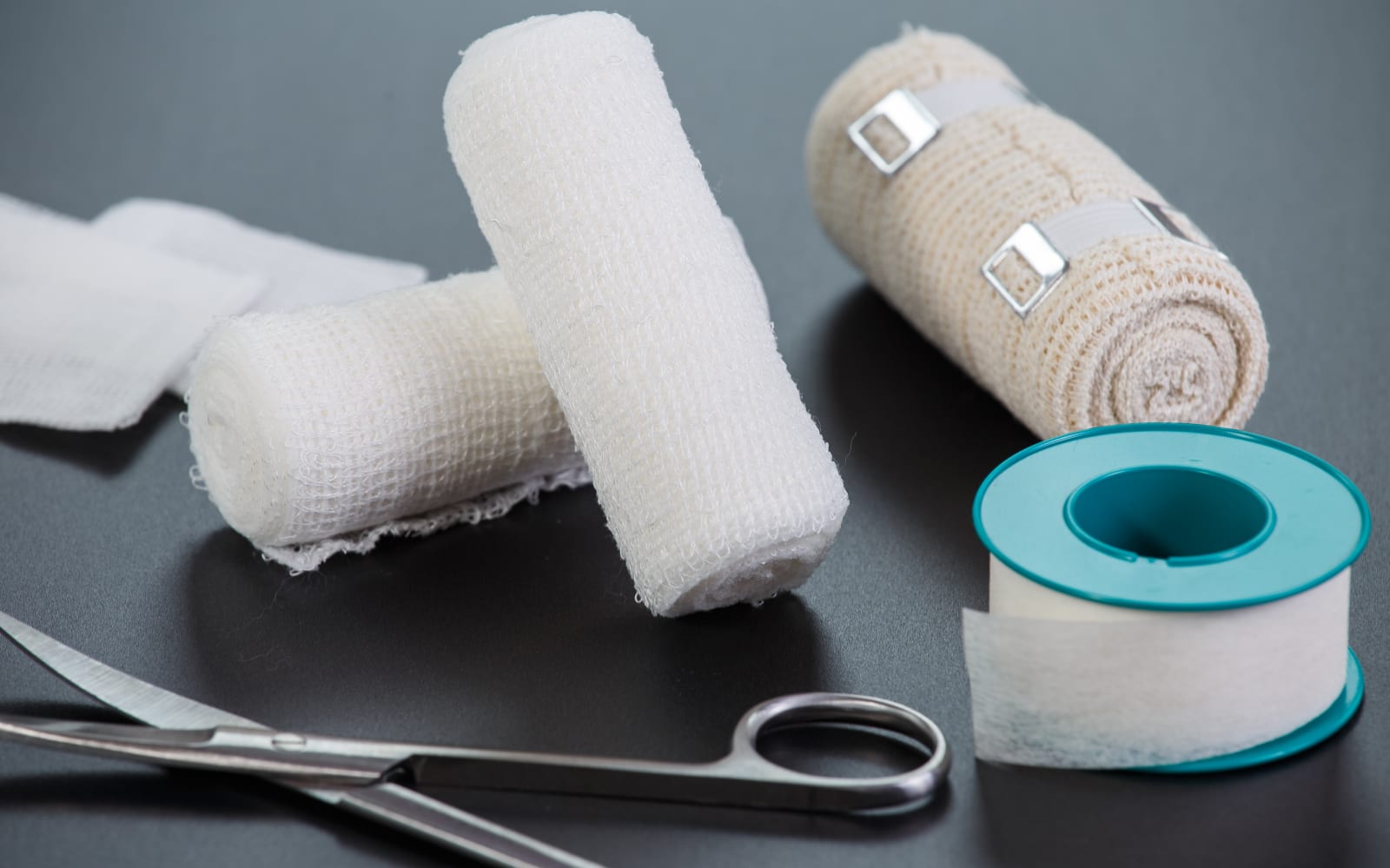
It may sound dramatic, but antibiotic resistance is one of the biggest threats to global health. According to the World Health Organization (WHO), it's urgent that we change the way we prescribe and use antibiotics. One approach might be to use bandages that sense and treat bacterial infections, even when the pathogen shows resistance. In a paper published by ACS Central Science, researchers from the Chinese Academy of Science explain how they've developed a way to do just that.
The color-changing, paper-based bandages that the team created start out green. If a material embedded in the bandage detects an acidic environment, typically caused by bacterial infection, it will turn yellow and release an antibiotic that kills non-resistant, or drug-sensitive, bacteria.
If the material in the bandage detects an enzyme produced by resistant microbes, the bandage will turn red. In that case, the bandage releases antibiotics and researchers shine a light on the wound. This photodynamic therapy uses a drug called a photosensitizer and a particular wavelength of light, which causes the photosensitizer to produce a form of oxygen that weakens the bacteria and makes it more susceptible to antibiotic treatment.
The researchers tested the bandages on mice, proving that they are able to sense E.coli infection and distinguish between drug-sensitive and drug-resistant cases. The respective treatments showed signs of working. If the researchers can perfect the bandages, they could offer a new, low-cost approach to monitoring and treating wounds, even those with drug-resistant bacteria.
Via: Phys.org
Source: ACS Central Science
by: via https://www.AiUpNow.com/